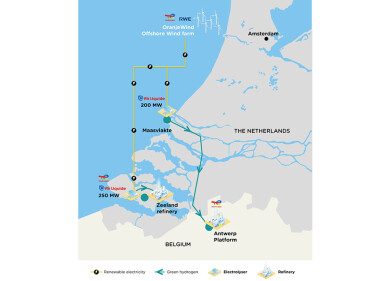Green energy
Can Dance Floors Power the World?
Aug 25 2015
A typical dance club, playing on average music three times a week, consumes a whopping 150 times more energy than the average household consisting of four people do in a year. In an attempt to offset this huge outlay on energy, some environmentally conscious clubs have made strides towards providing green services.
These include waterless urinals, recycled water in toilets and organic beverages behind the bar. However, could they go one step further and harvest the energy produced by their patrons to fuel the party?
Piezoelectric Power
The idea relies on the principle of piezoelectric energy, which is derived from mechanical movements – such as walking, sprinting or dancing. When pressure is applied, both a negative and positive charge is produced (on the expanded and compressed sides, respectively). After the pressure is taken away, an electrical current is allowed to flow across the surface. This piezoelectric energy can be harvested and used to power small-scale devices, such as LED bulbs.
In fact, the idea has already been applied to footwear, in the hope that the energy gleaned could be diverted towards relaying the coordinates of the wearer. Such an application could come in particularly useful in the case of a rescue team being sent into an unfamiliar building, for example.
The Piezoelectric Dance Floor
In 2007, a pair of students from the Massachusetts Institute of Technology (MIT) pioneered a project called “Crowd Farming” which proposed putting piezoelectric flooring in urban spaces. The principle would work exactly the same as the shoe mentioned above – but instead would cover the entire surface area of the floor, meaning that the collective energy produced by everyone walking over it could be gleaned.
Though the idea didn’t fully take off, it’s an interesting proposition. A team students from Duke University in Durham attempted to take the idea to the next step by creating a piezoelectric ‘smart home’, but ultimately failed due to expensive installation costs and negligible gains.
However, certain dance clubs around the world have jumped on the idea and tried to implement it into their dance floors. One such location is Surya in London, which opened back in 2008 and expected to generate up to 60% of its total energy from dancing. Though the idea hasn’t exactly set the world alight in the ensuing seven years, it’s an interesting approach to the ever-increasing problem of replacing fossil fuels and switching to renewable energy.
Can Dance Floors Power the World?
One of the major problems with the technology is the fact that piezoelectric power is low in amperes and high in volts, meaning it must be moderated by a volt regulator before it is able to be used. Capacitors and sensitive wires made of platinum must also be used in order to store the energy for any length of time, making it a fairly expensive and impractical process.
Of course, this is not to say that we might not power our homes with our dance moves one day… but it will require far more understanding and mastery of the concept before that day arrives.
Events
May 18 2025 Algiers, Algeria
23rd International Water Management Exhibition
May 20 2025 Prague, Czech Republic
Jun 17 2025 Guangzhou, China
Singapore International Water Week Spotlight 2025
Jun 23 2025 Singapore
Jun 25 2025 Sao Paulo, Brasil














